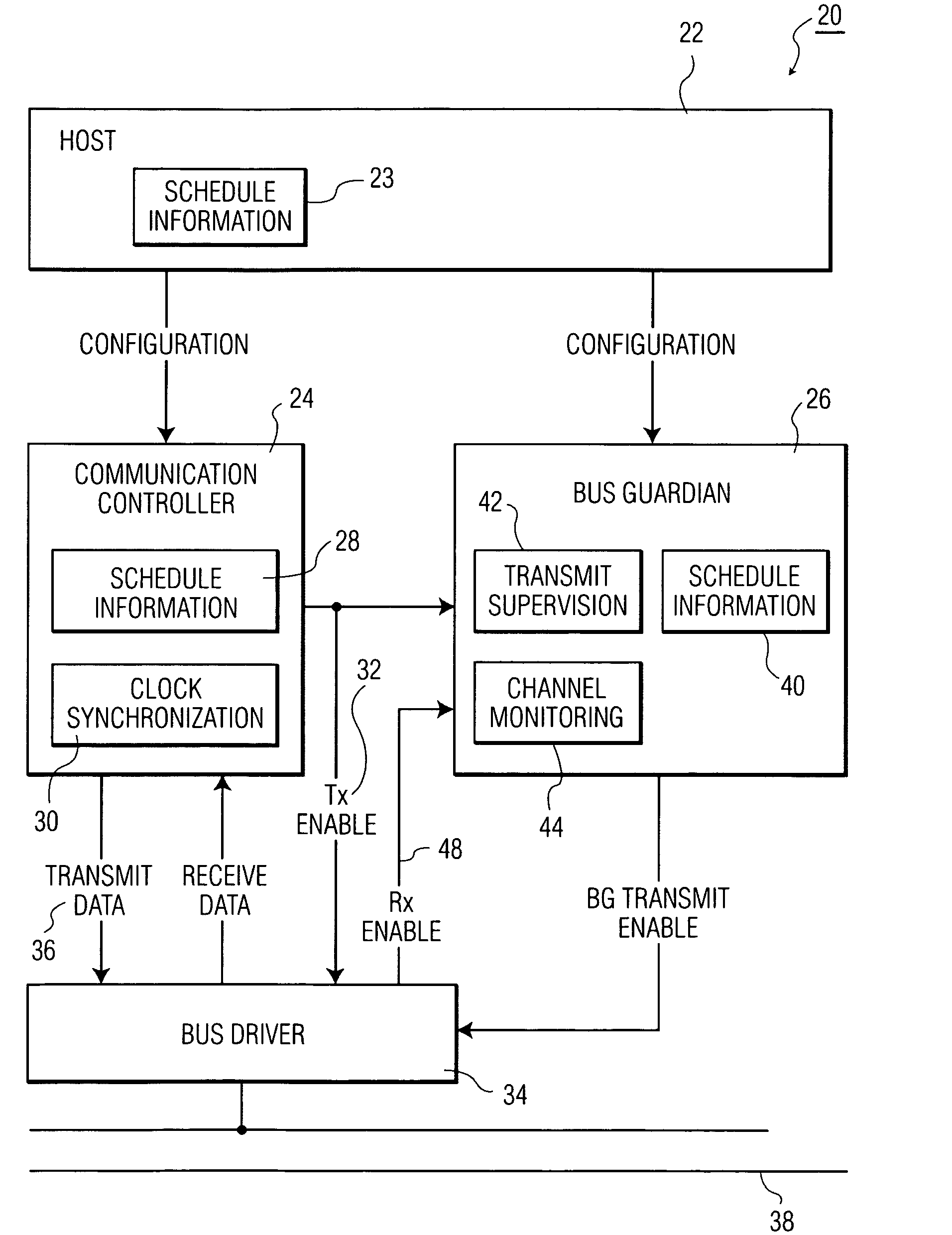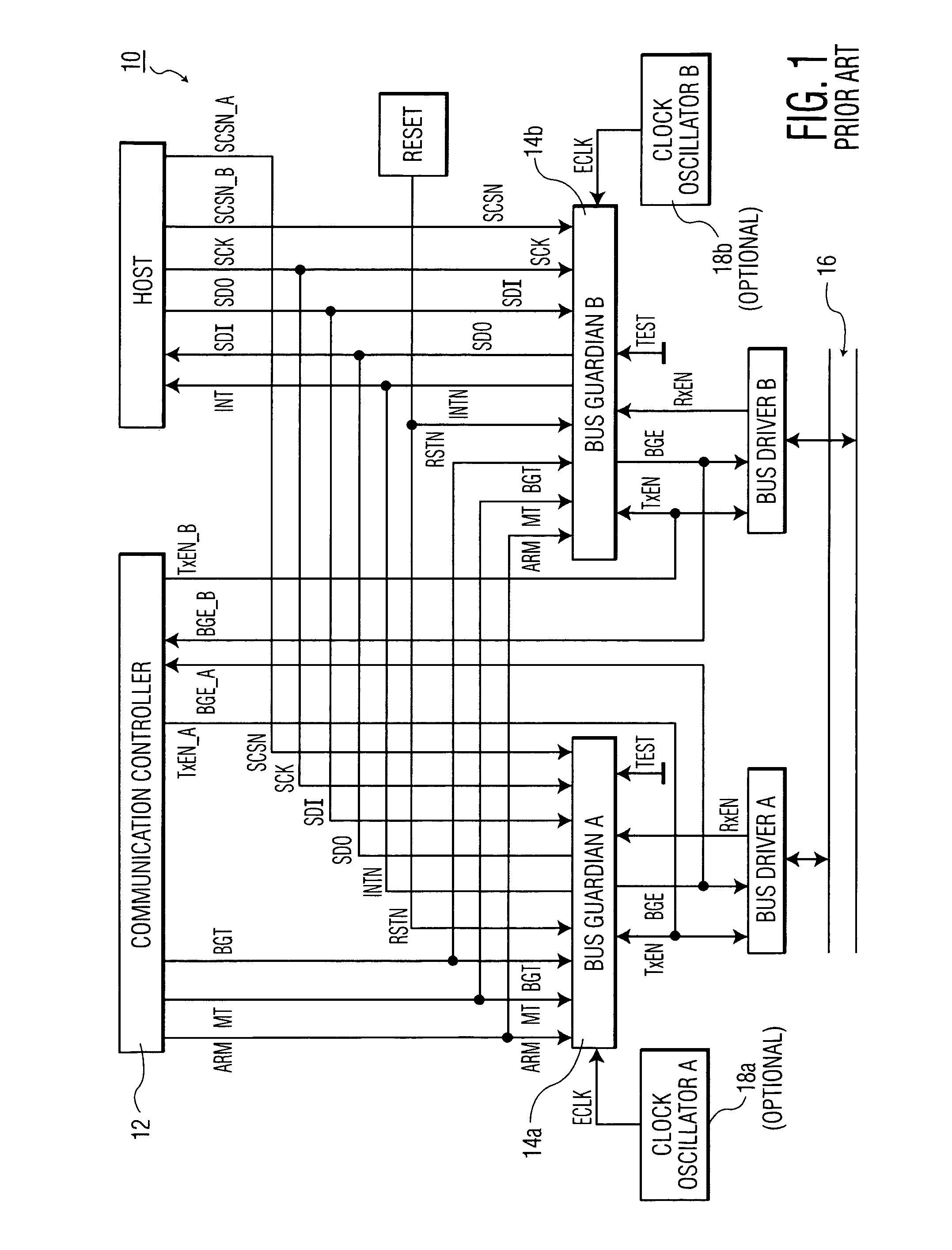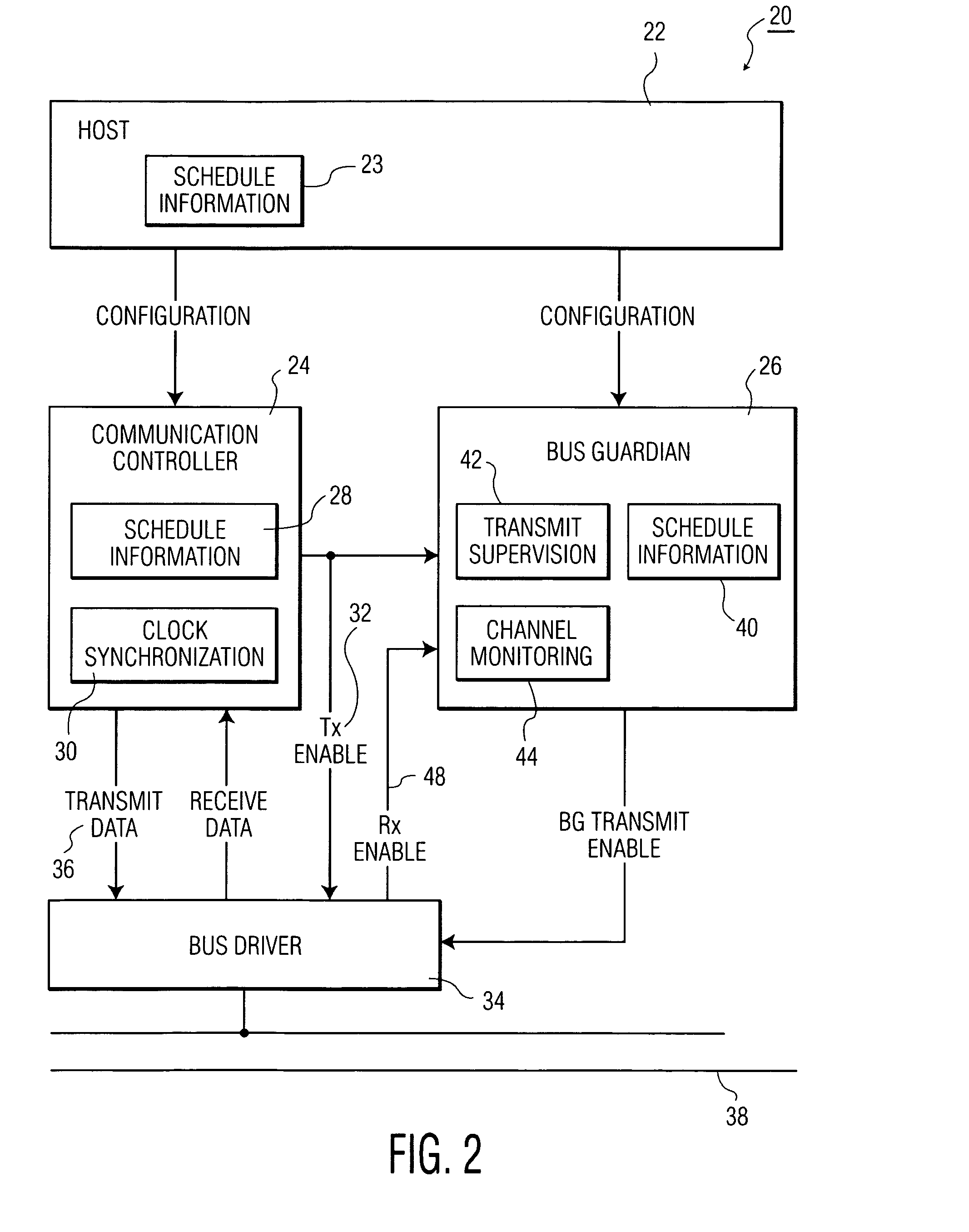Bus guardian with improved channel monitoring
a guardian and channel technology, applied in the field of electronic communication, can solve the problems of inability to fully support new demands by existing communication protocols, inhibit any further transmission attempts, and miss a few timing failures
- Summary
- Abstract
- Description
- Claims
- Application Information
AI Technical Summary
Benefits of technology
Problems solved by technology
Method used
Image
Examples
Embodiment Construction
[0021]Presently, dependable automotive communication networks typically rely on time-triggered communication protocols like the Time Triggered Communication Protocol TTP / C (TTP) or the FlexRay protocol. Such protocols are generally based on broadcasting messages according to a pre-determined TDMA scheme. After configuration of the network, each node in the network only has ‘a-priori knowledge’ of its own transmission times within the communication schedule and only transmits messages when its designated transmission time slot arrives. Without additional error detection, a faulty node could transmit at any time. By transmitting at times other than the faulty node's designated transmission time it could disturb the communication of other non-faulty nodes in the network. This type of failure is known as a “babbling idiot failure”. A well-known technique for avoiding a babbling-idiot type of failure is to add a bus guardian circuit between a communication controller circuit and the com...
PUM
 Login to View More
Login to View More Abstract
Description
Claims
Application Information
 Login to View More
Login to View More - R&D
- Intellectual Property
- Life Sciences
- Materials
- Tech Scout
- Unparalleled Data Quality
- Higher Quality Content
- 60% Fewer Hallucinations
Browse by: Latest US Patents, China's latest patents, Technical Efficacy Thesaurus, Application Domain, Technology Topic, Popular Technical Reports.
© 2025 PatSnap. All rights reserved.Legal|Privacy policy|Modern Slavery Act Transparency Statement|Sitemap|About US| Contact US: help@patsnap.com



